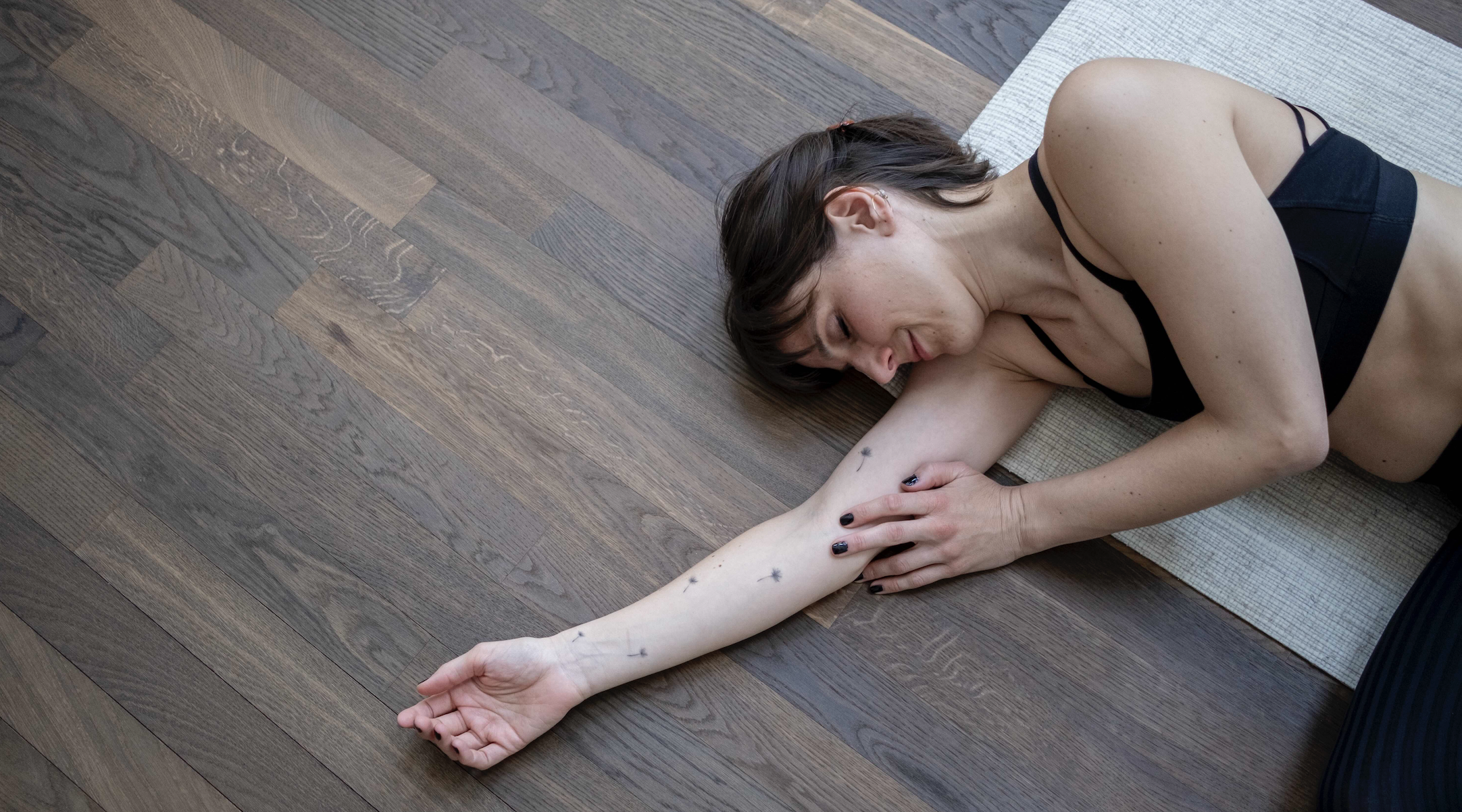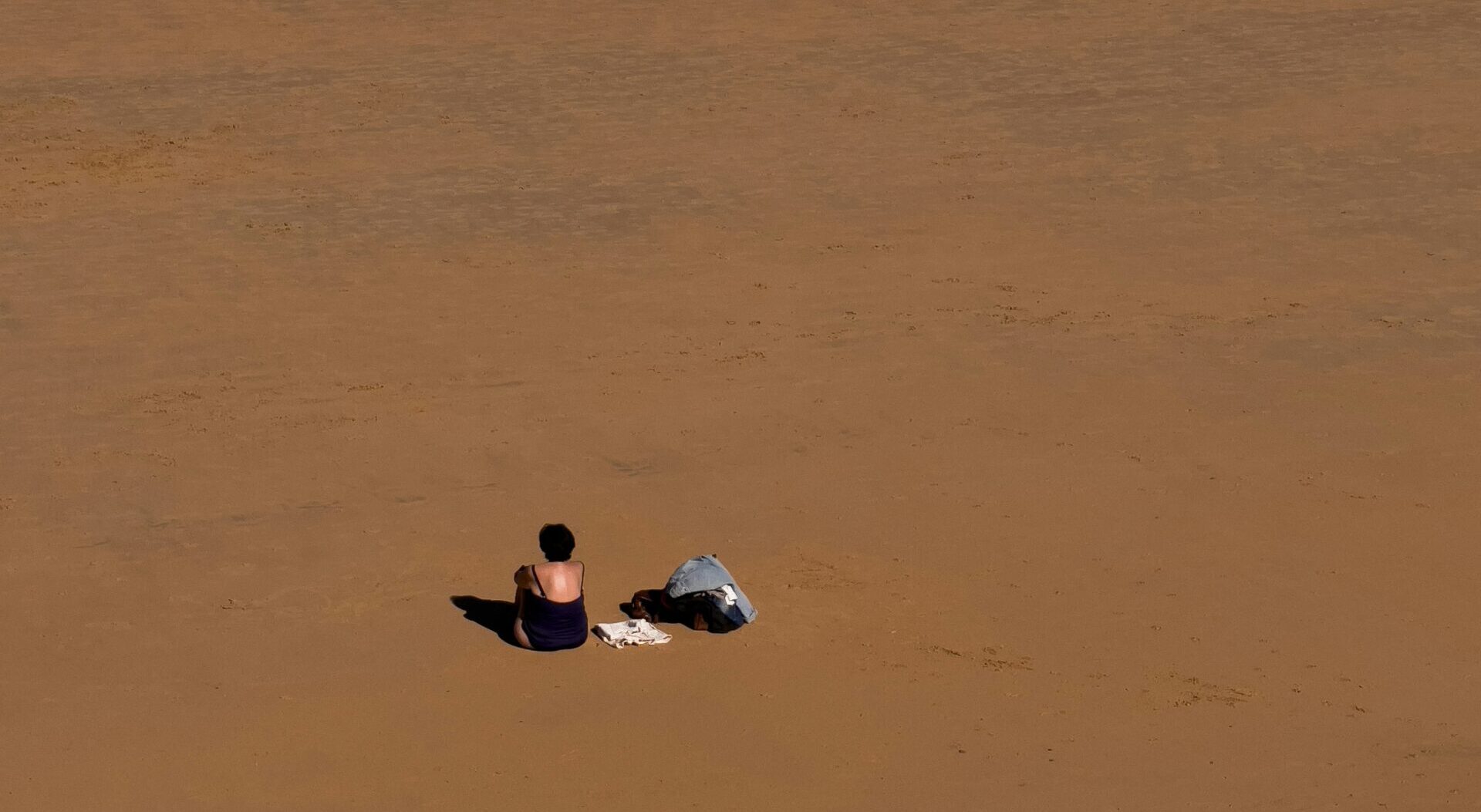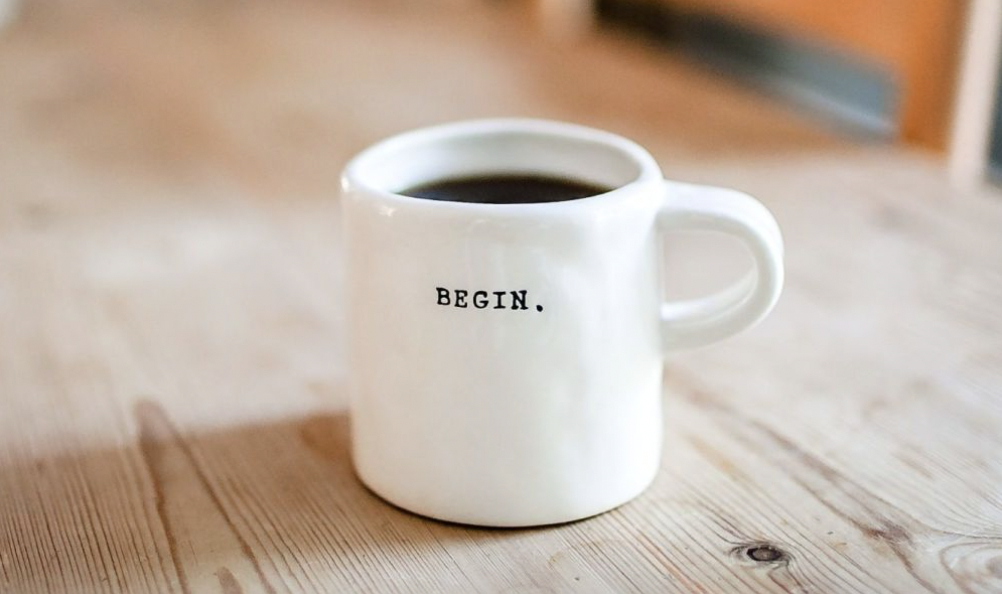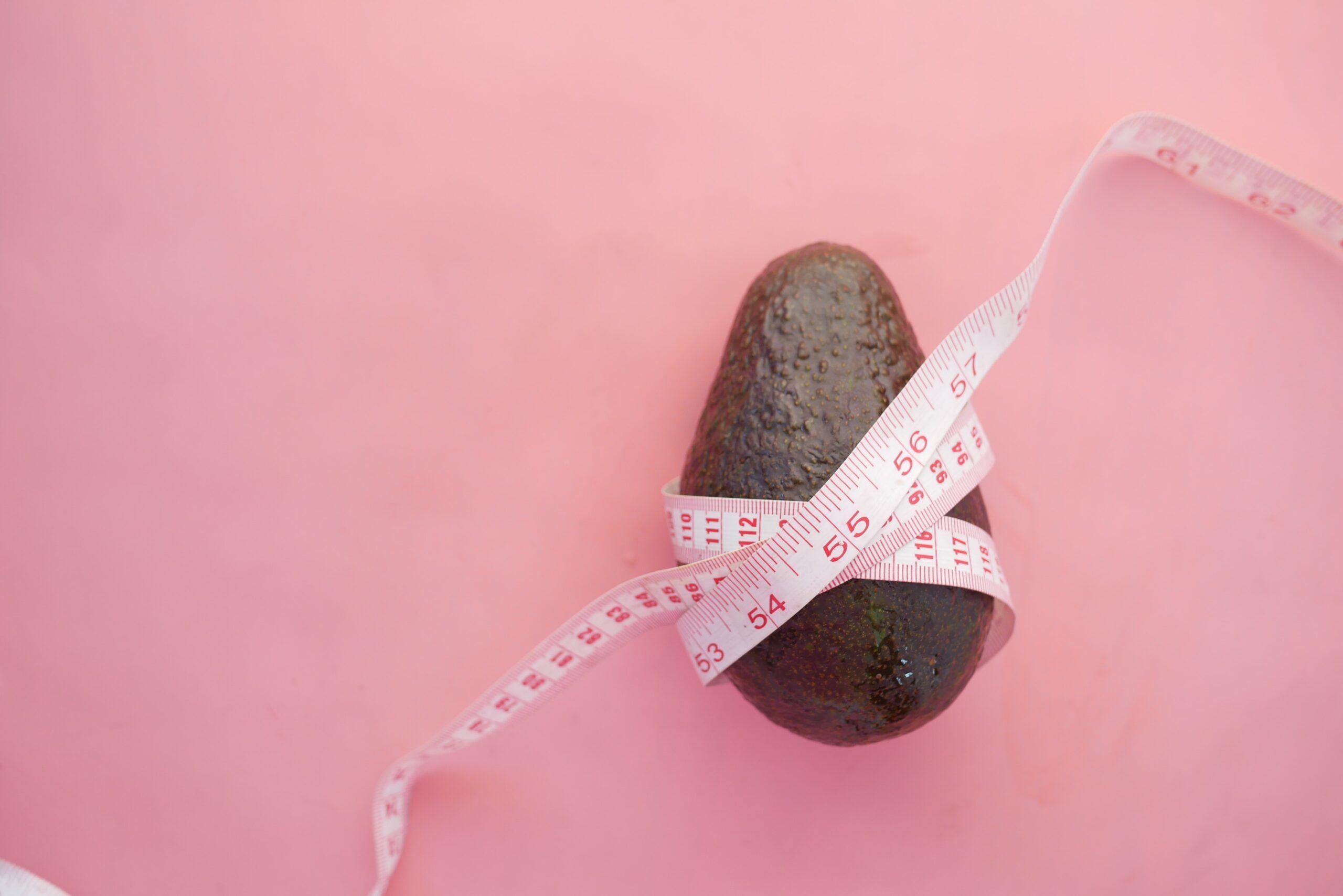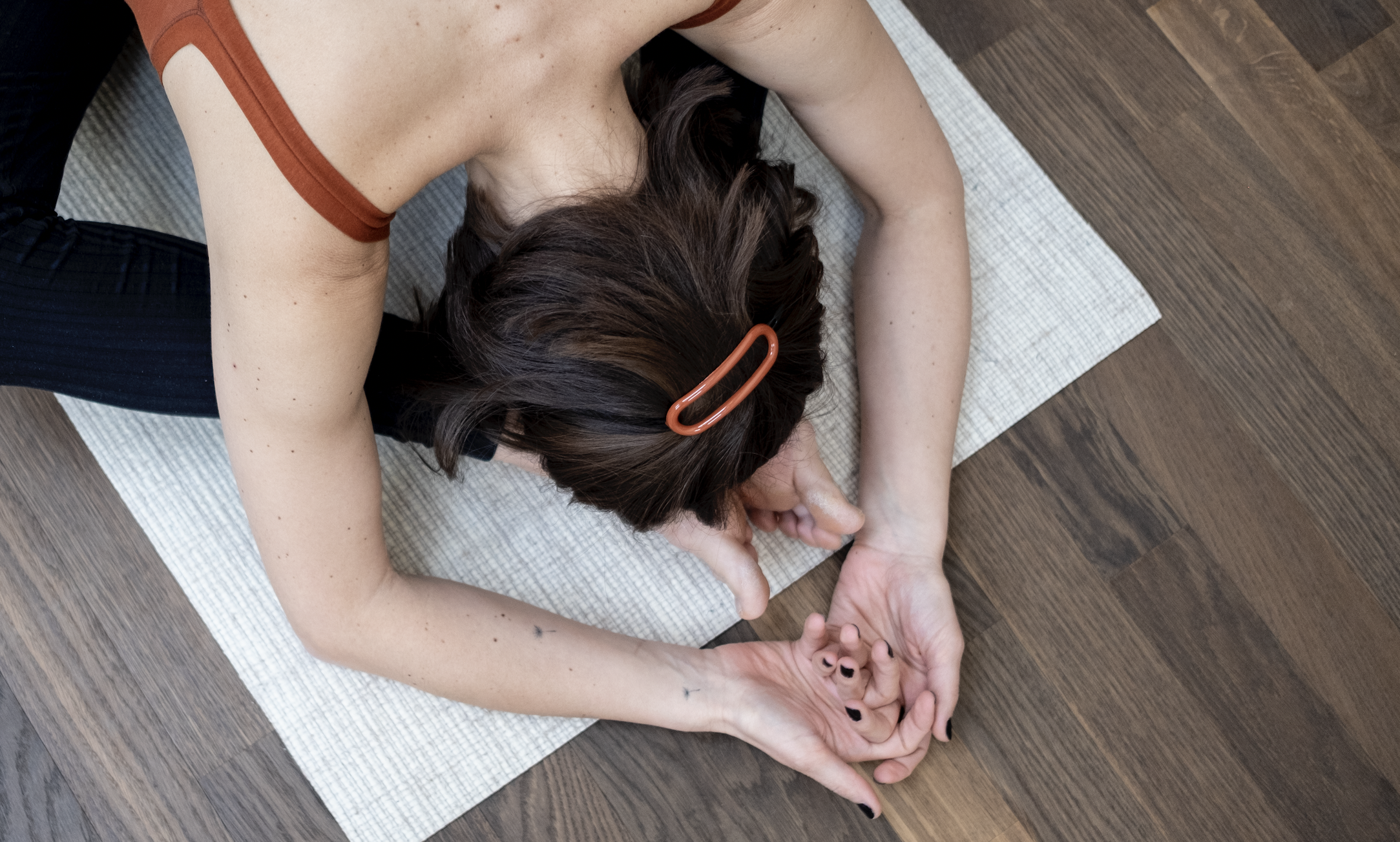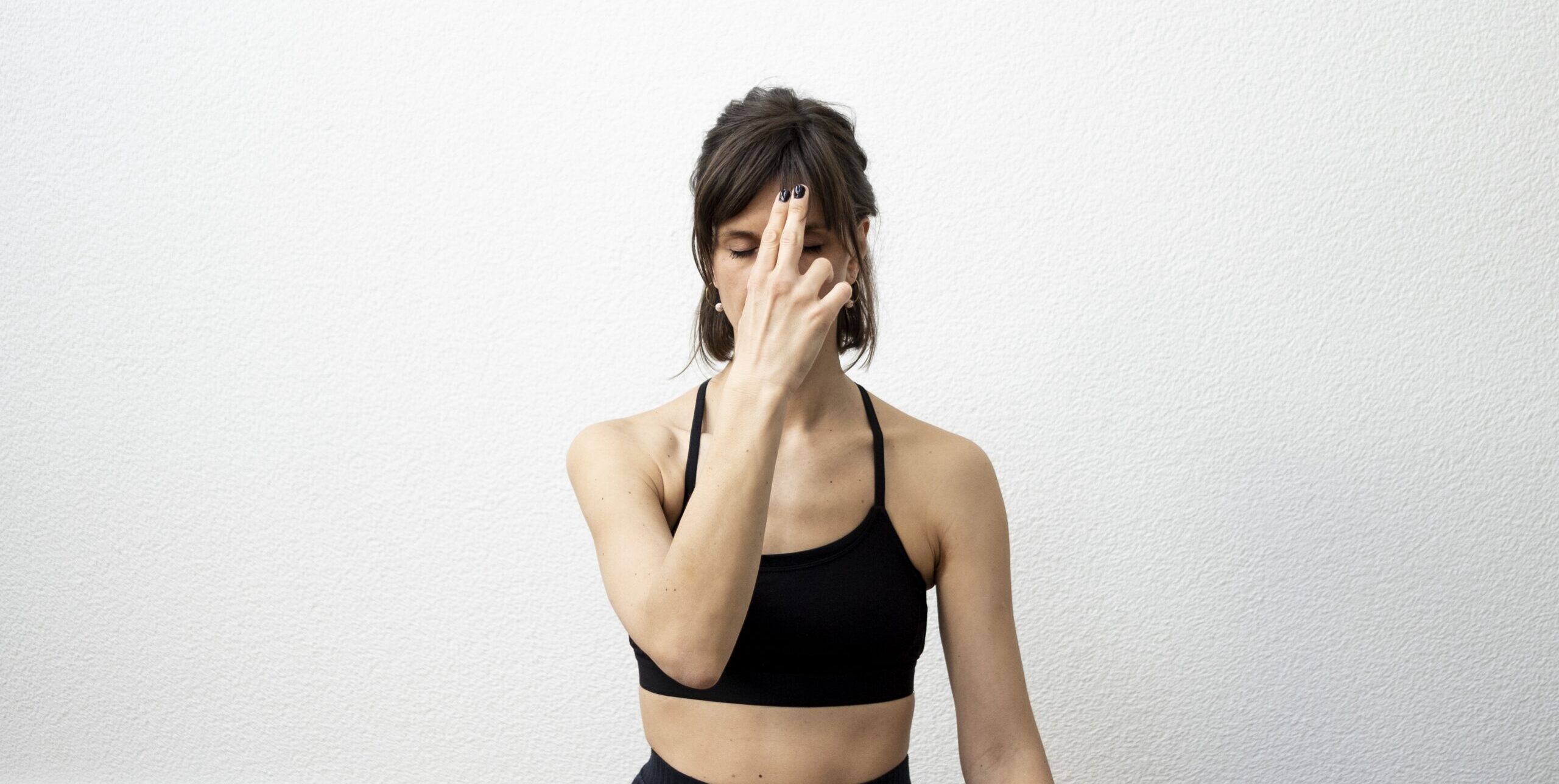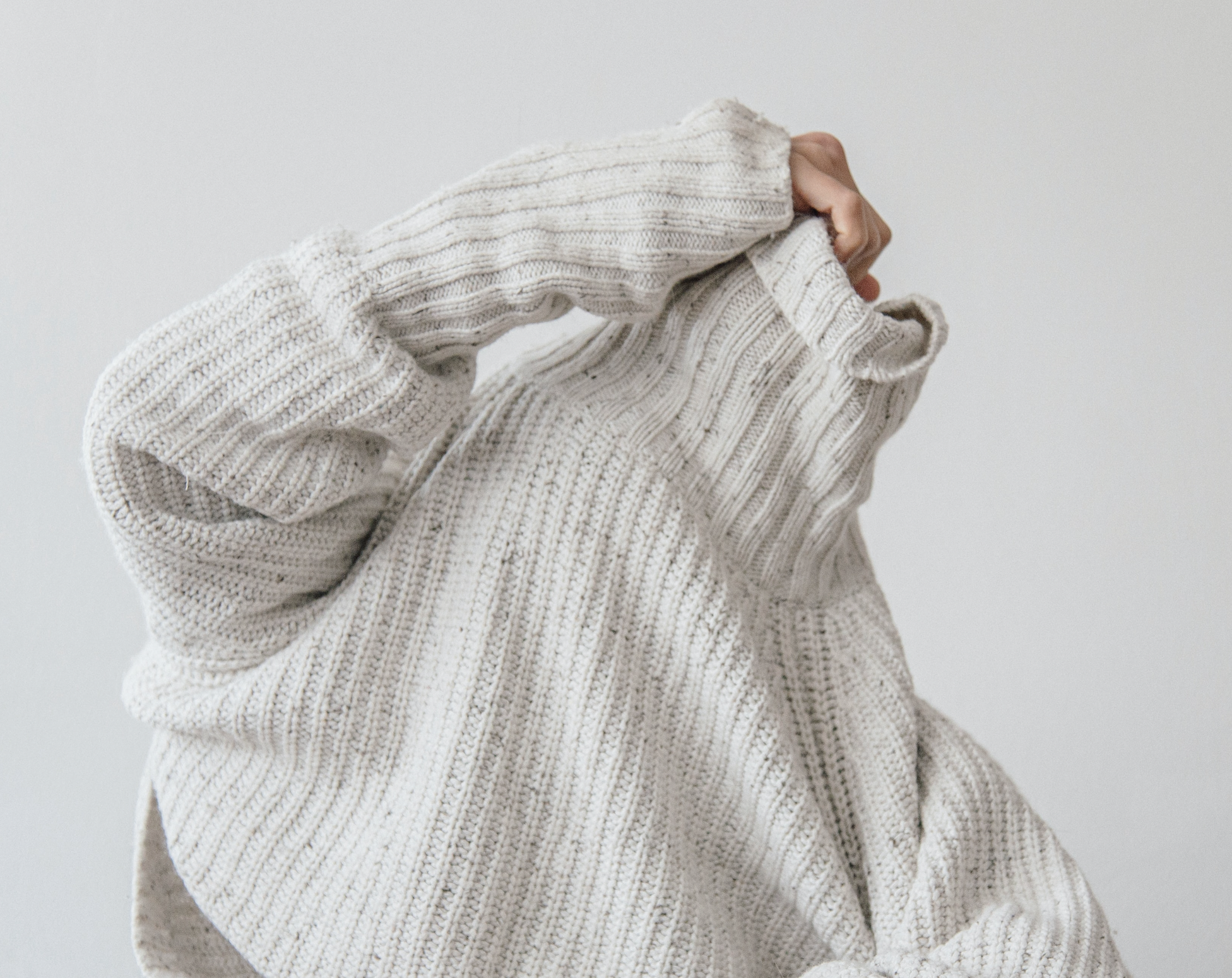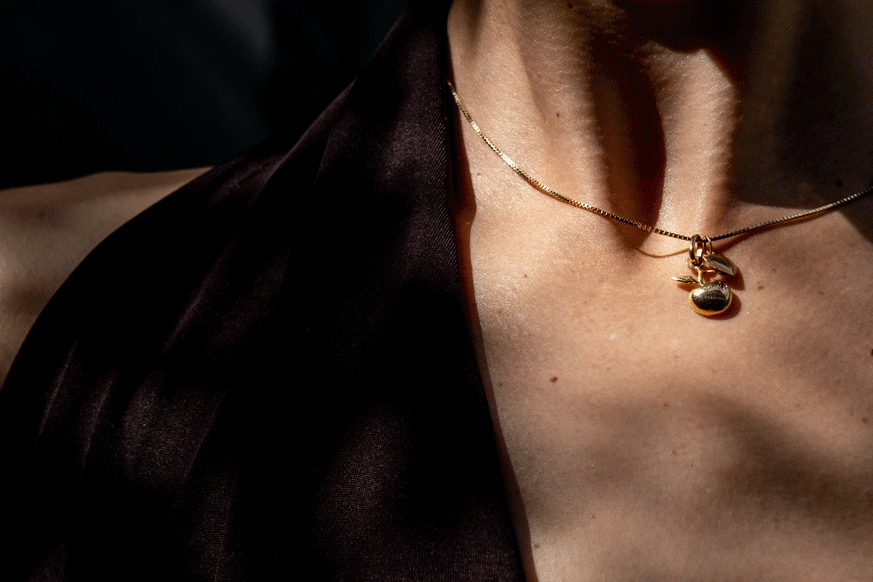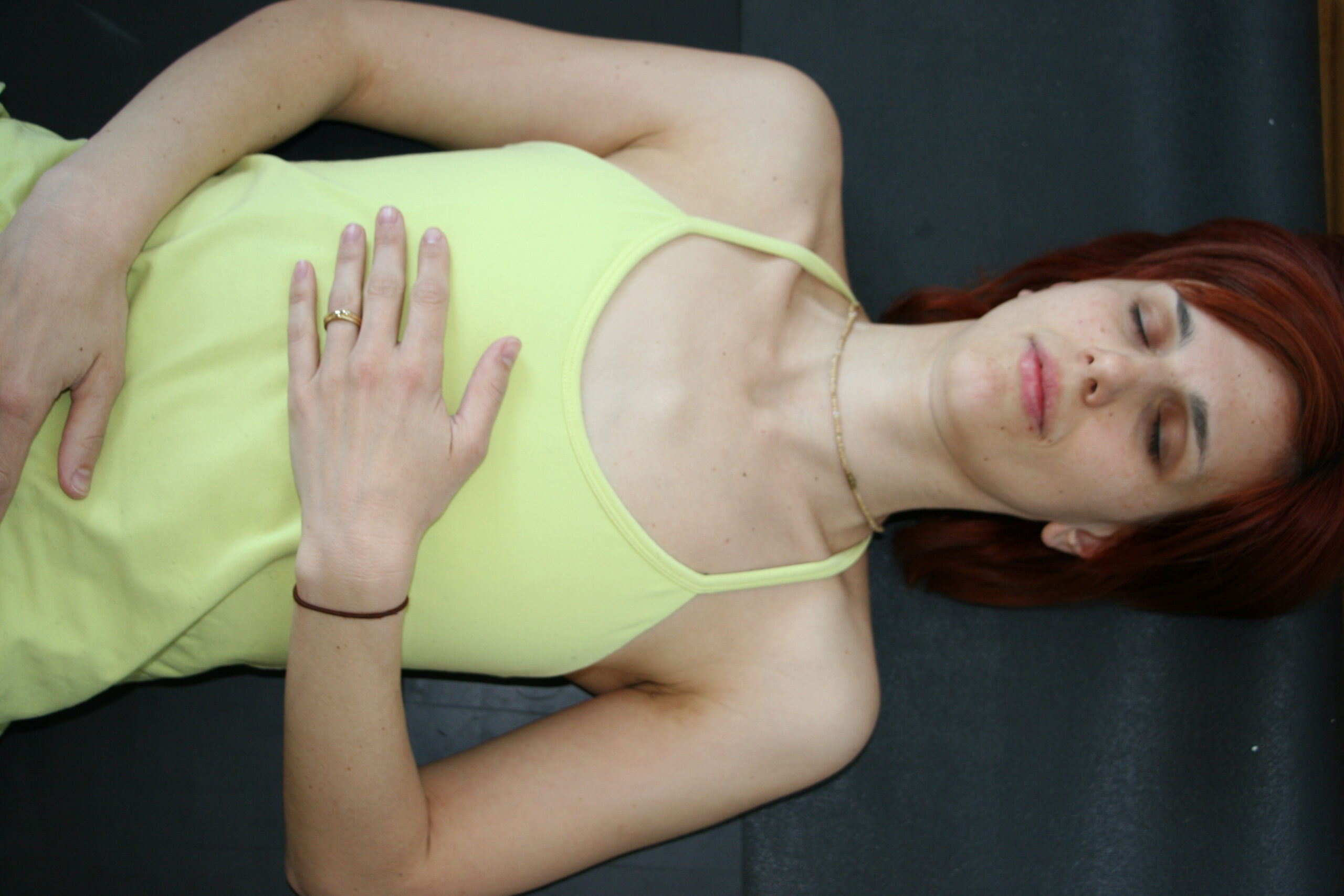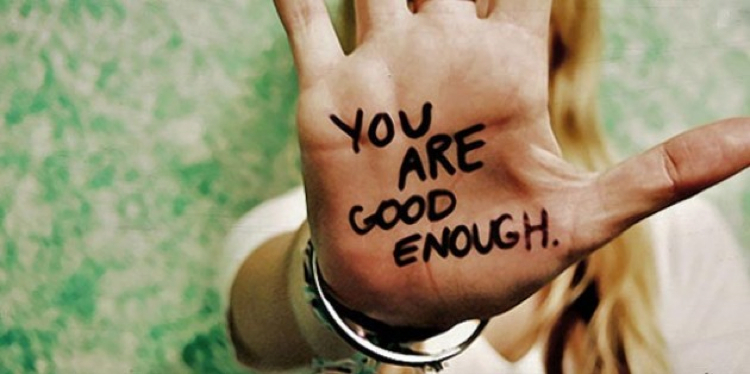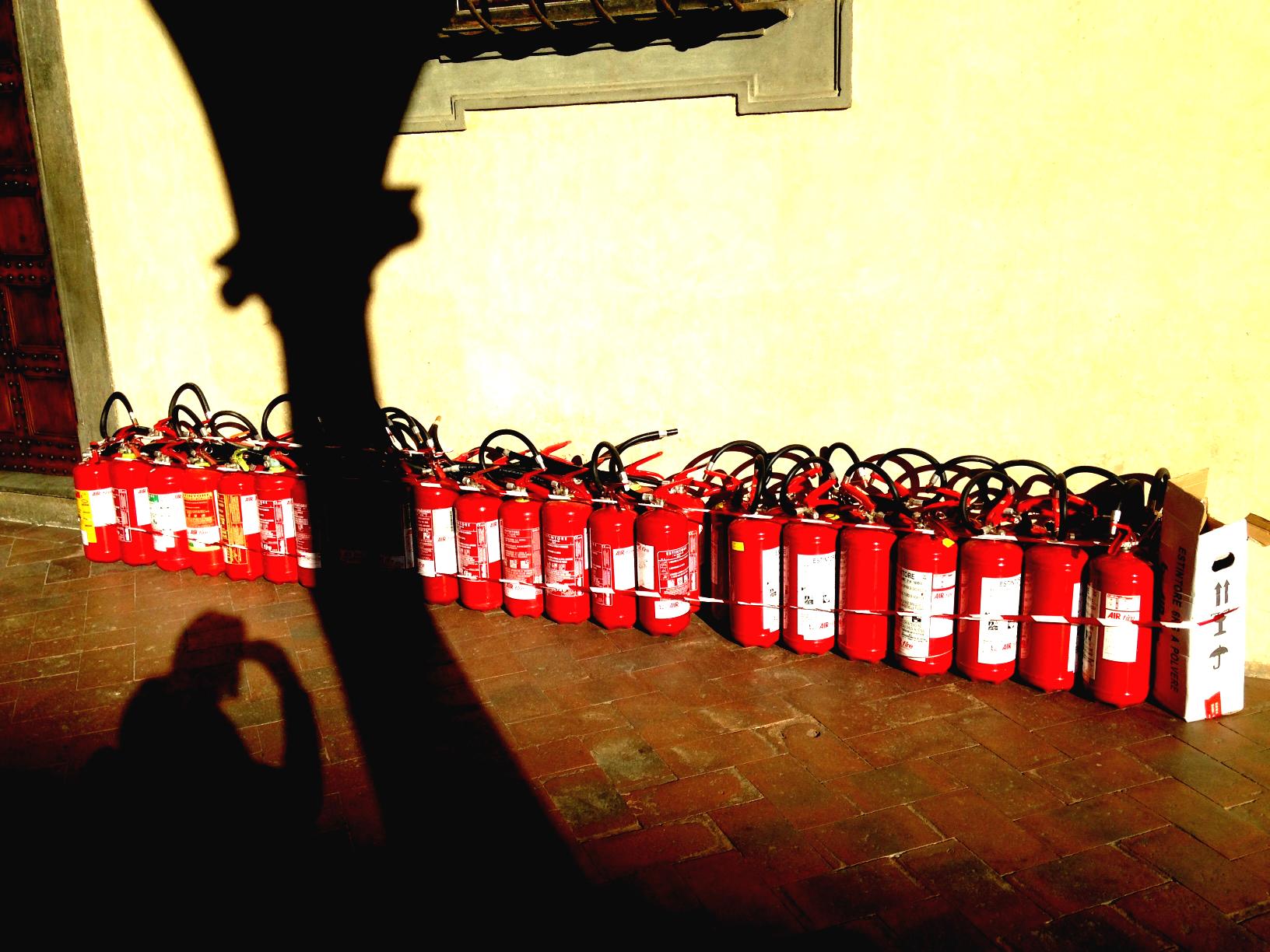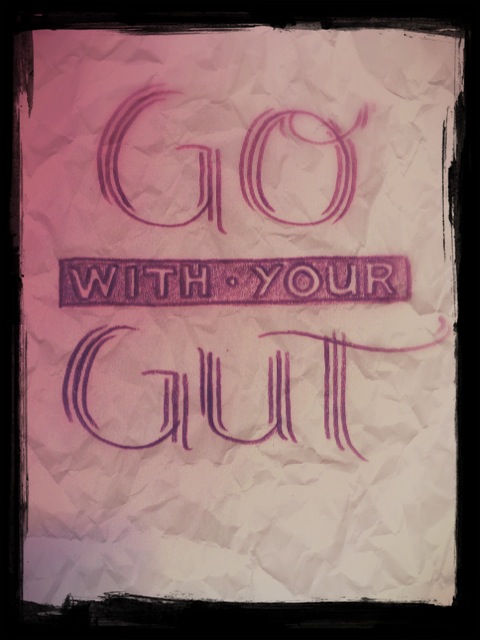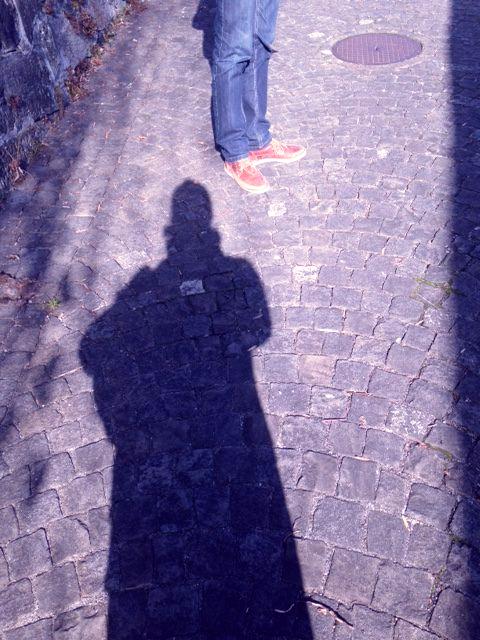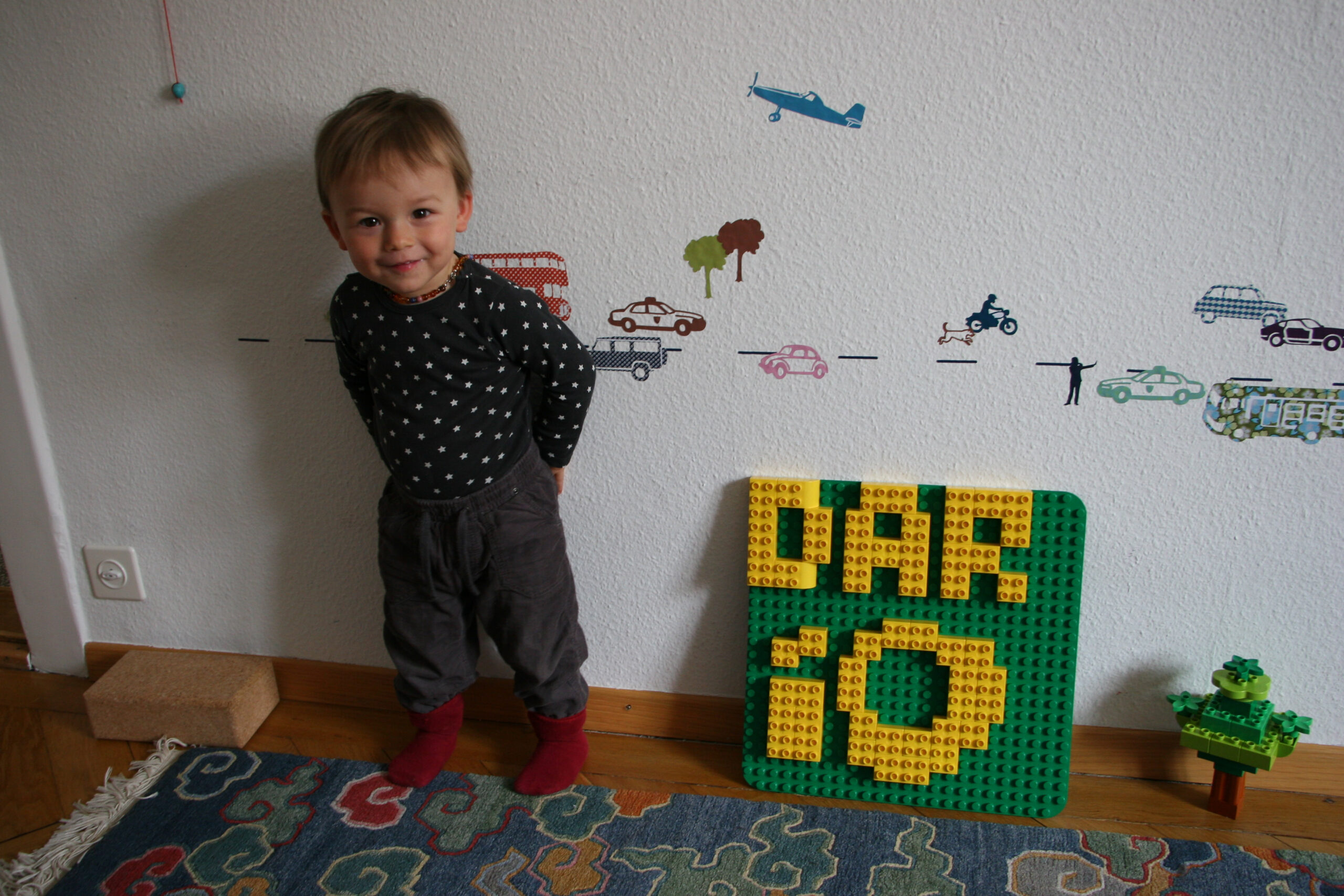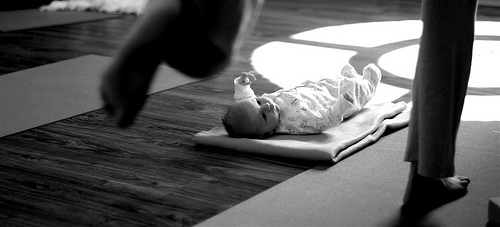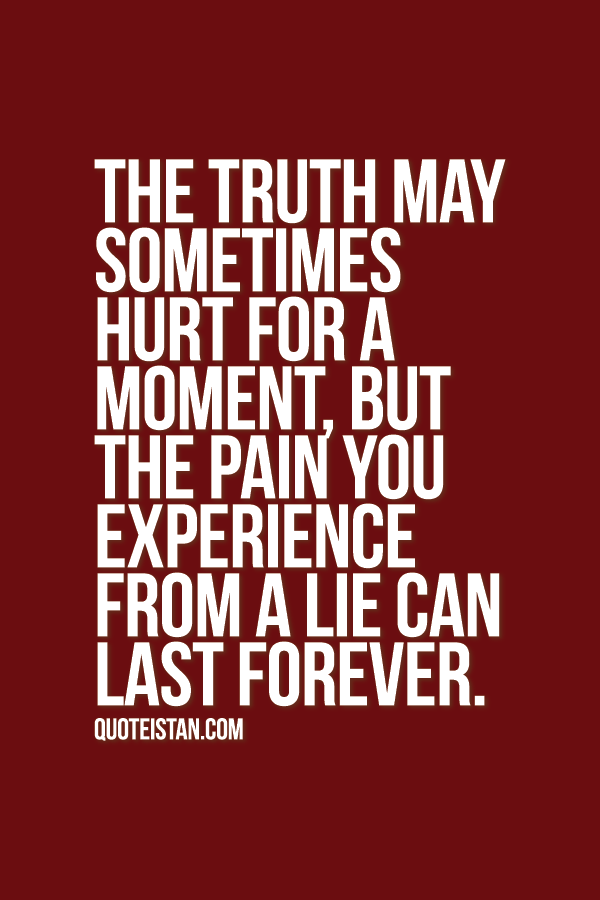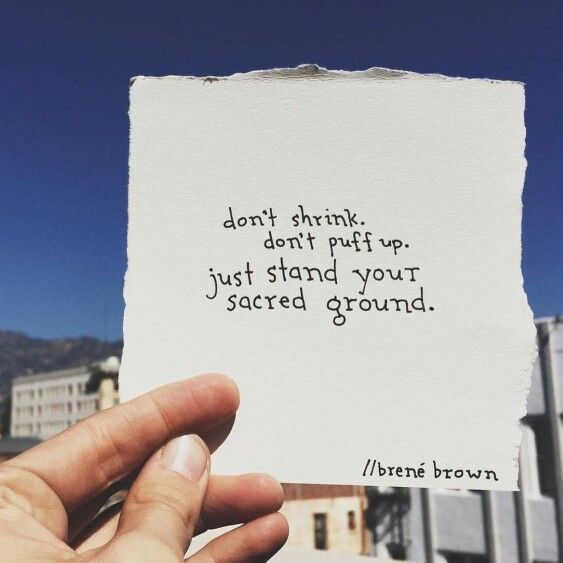Erschöpfung bei Yogalehrer:innen: Fast alle kennen sie, die wenigsten sprechen darüber. Dabei gibt sie Anlass zu einer wertvollen Standortbestimmung. Fünf Yogalehrer:innen erzählen, auch wie sie sich die Freude bewahren.
In welcher Sprache erkenne ich mich wieder? Bei SRF Input wurde ich zum Thema Mehrsprachigkeit interviewt. Und realisierte: Mehrere Sprachen bilden meine Identität. Das erschwert mein Gefühl von Zugehörigkeit.
Dry January, Veganuary und dann? Wie gesunde Gewohnheiten auf Dauer gelingen. 3 Tips dazu in diesem Blogpost.
Wir können nicht aus unserer Haut raus. Unsere Gesellschaft und Kultur ist von Fatphobia (panische Angst vor Übergewicht) geprägt. Schlankheit steht nicht nur in Verbindung mit Schönheit. Einer übergewichtigen Person sprechen wir sofort Qualitäten wie Selbstdisziplin, Zuverlässigkeit, sogar Intelligenz ab. Kein Wunder sind wir deswegen auch mit uns selbst so streng.
Drei Gründe für Yin Yoga und meine Liebeserklärung: Entschleunigung, Selbstfürsorge und Resilienz.
wir intensiv atmen, öffnen sich die emotionalen Schleusen. Warum eigentlich? Der Versuch einer Einordnung.
So oft konsumieren wir – egal was – um ein Gefühl von Unzulänglichkeit oder Unzugehörigkeit zu überdecken. Wir erleben einen kurzen Glücksmoment – auch bekannt als Dopamin-Kick – und das Problem scheint zumindest vorübergehend aus der Welt.
Especially for women, but for everybody really, it’s imperative that we check in with our bodies. By the way, with our minds as well. How is that going to happen if we don’t have a way of establishing contact? Whether we do it digitally, visually or by cultivating a regular physical or mindfulness practice, we must enter communication with our body - all parts of it. How else will we notice changes? How else can we become literate in the language of our body and intimate with ourselves?
Have you ever watched a baby breathe? Their bellies are so soft and round and they bulge even more with every inhale. Then the belly drops slightly with the exhale, like a parachute as it lands. Floop. For most of us, the breath pattern changes as we get older. Somewhere around adolescence, we start to breathe more superficially, higher up in the thorax. We just take in a little sip of air to fill the upper part of the lungs and then expel it again. As if we were saying: “I don't have time to breathe, let's get this over with quickly.” Some people also develop what's called reverse breathing. They suck in the belly as they inhale, hollowing it out, and push it out when they exhale. That's the way I used to breathe when I first came to yoga. I believe I developed the habit because I was dancing during all of my teenage years. Of course, when you're standing at the ballett barre with mirrors covering most of the wall space, you don't want your belly to stick out. So they teach you to breathe only into the side ribs while keeping your belly flat and in.

 That is not inherently wrong. In some martial arts it's actually the indicated way to breathe. It's simply a different way to use (or not use) our diaphragm. For deep abdominal (also called natural or diaphragmatic) breath we engage the diaphragm, which is our primary breathing muscle. The diaphragm is dome-shaped when it's relaxed and its circular rim is attached to our bottom ribs and lower spine. When we contract the diaphragm it flattens out, thereby pushing down on the abdominal organs (that's why the sack of organs bulges forward) and creating a negative pressure in the chest cavity. To even out the pressure in the thorax, we reflexively let the air stream in, i.e. we inhale fully.
That is not inherently wrong. In some martial arts it's actually the indicated way to breathe. It's simply a different way to use (or not use) our diaphragm. For deep abdominal (also called natural or diaphragmatic) breath we engage the diaphragm, which is our primary breathing muscle. The diaphragm is dome-shaped when it's relaxed and its circular rim is attached to our bottom ribs and lower spine. When we contract the diaphragm it flattens out, thereby pushing down on the abdominal organs (that's why the sack of organs bulges forward) and creating a negative pressure in the chest cavity. To even out the pressure in the thorax, we reflexively let the air stream in, i.e. we inhale fully.
When we use the reverse technique, we put the cart in front of the horse. We suck in the abdomnial organs, so the diaphragm has more space and the pressure in the chest cavity drops, so we can fill the lungs with air. Like I said, just a different technique. Both are valid, but we need to be aware that each of the patterns sends a different message to the brain. Superficial, quick breathing is connected with stress or the famous fight or flight response. Deep, full breathing is associated with the relaxation response in the nervous system. And here's what's really important to know: The breath and the nervous system (or the brain) mutually influence each other!
When we are mentally stressed our breath speeds up. If we consciously slow down our breath, we trigger the relaxation response in the nervous system. This makes the breath a unique tool to stay calm even when things get hectic.
Chest breathing or reverse breathing is very prominent in men or athletes, people who are supposed to be competitive, very A-type, and alas, stressed out. People who are consumed with the need to be good enough. If we get used to breathing in a way that signals stress to the body – yes, you guessed right – we will permanently be in stress response, even when there is absolutely no need. Over time, that can be harmful to our overall health.
One night, as I was teaching Pranayama, it dawned on me that chest and reverse breathing patterns arise out of fear. And what are our fears in this incredibly priviledged life? We are afraid of not meeting a deadline, of being late for a meeting or of freezing during a presentation. We are afraid of not being attractive or smart enough. We are afraid to show our wounds and our insecurities. It just recently occurred to me that many of those fall under the category of “being afraid to take up too much space.” Because if we were too conspicuous in one way or another, we would fill out most of the stage, we would draw attention to ourselves. If we were too honest or too loud in some way, we would use up too much space.
The breath reflects our fears: Could it be that babies breathe so fully because they have not had as many scary and scarring experiences (and they forget quite easily at the beginning)? Taking up space, also known as, screaming at the top of their (yes) lungs, is crucial for a baby's survival. But something happens along the way. We are taught that it's rude and inconsiderate to be too loud. We are taught – like I was at the ballett barre – not to take up too much space, breathing and otherwise. We become more hesitant when it comes to expanding and expressing. And naturally our breath will reflect that.
This is one of the many reasons why working with the breath or the formal practice of Pranayama can be so therapeutic and transformative. We learn the technique of deep abdominal breathing again. We train our diaphragm. And literally and figuratively, we begin to fill out the space again. We allow ourselves to be spacious without being apologetic about it.
As we learn to calm the breath we also signal to the brain that the whole system can relax. No need to fight or flee. We create a calm and serene inner environment. From such a place of clarity and security it is much easier not to be afraid.
Exercise:
Lie on your back or sit comfortably. Relax the abdomen to the point of letting it plop out. Place a flat hand or just a finger a few centimeters away from the wall of your abdomen. Inhale and try to let the abdomen inflate so it reaches your hand. Exhale, observe the wall of the abdomen dropping gently drawing in towards the spine and away from your fingers.
It's easier lying on your back, because the abdominal muscles can be more relaxed here. So this is a good place to start.
 (Click to watch the gif)
(Click to watch the gif)
Tip: Relax your jaw as you breathe. This will also influence the nervous system.
Only recently, I looked around and realized: many people who come to yoga – and I am one of them – are A-type personalities. They are quick-thinking, efficient, ambitious, often successful, and used to being good at what they do. I have often wondered whether this personality type stems from nature or nurture? Some of us are naturally fiery, outgoing and have an unquenchable thirst for life. But I can't deny that being brought up in a society where hard work and successful performance are highly commended and recommended has molded us all a certain way. Is the said personality type attracted by yoga? Yes and no. We have all heard that yoga relaxes you, puts things into perspective and teaches you to let go, little by little. It is exactly what the doctor prescribes for the overly ambitious. It is also true that yoga is about turning your gaze inwards. It is not about looking around to check what the person next to you is doing, and certainly not about comparing. But guess what happens when a lot of A-type personalities practice together in the same room? Exactly. The very thing we thought ought to put some distance between ourselves and our hamster wheel, becomes yet another thing we have to be good at – even excel at.
As I took my first steps into the world of yoga, the practice itself was a revelation to me. With 20 years of dancing literally on my back (because my back was hurting), it was the first time I heard a teacher say: “Listen to your body. If you are tired today, there is option 1. If you feel that you can go deeper, this is option 2. If you feel that this is plenty, maybe backpedal a bit. If you can't breathe fully, then you may have asked too much of yourself today.” Revelation. I felt like I wanted to put up my hand and ask for clarification: “Really? I don't have to push myself and ignore the pain? I can ask myself what I need and then follow that intuition?” I could hardly believe it. I came from a black-and-white world where it was all about reaching the one ideal or die trying. Everything else was worth nothing. In yoga, it was no longer about fitting in or being good enough. It was simply about listening, giving an honest answer and then reacting with compassion.
I guess it is not surprising that once I started teaching, this became one of the one message I really wanted to convey. My classes can be vigorous and heat-building, but they are never about ignoring your limit. To this day I am suspicious of methods and teachers that tell students there is only one proper way to do a particular asana, practice or sequence. It is a valuable way, but it is not for me, as I believe it perpetuates the patterns of the A-type personality. Dangle a carrot in front of our nose and we will run full out until we get to that piece of vegetable. Even if we break our hind legs in the process. I can only speak for myself, but learning to slow down and observe, to recognize my limit has probably kept me healthy and injury-free all these years. And I'm certainly not one who asks little of herself.
I do have to admit that I am slightly two-faced here. You may hear me tell students to pace themselves, to respect the signals the body is giving them. I encourage them to investigate this feeling of inadequacy that spurs most of us on. And yet, I often don't walk the talk. While I have no interest in pushing myself in my physical practice, my inner dialogue is still shaped by the urge to be good enough. Still motivated by the inner child that wants to be seen, accepted and loved, and thus will go to great lengths to achieve and stand out.
It is easy to compartmentalize here, easy to think: “Oh, I've truly absorbed this into my yoga practice. I have developed compassion for myself. Check. Done.” But what about outside your yoga practice? In my experience the feeling of never being good enough is almost ineradicable. And maybe not just for A-type personalities. You may think you have softened and ushered it out the front door, but it will come back and sneak in through the backyard.
Why am I telling you this? I'm telling you just in case you have heard me phrase instructions in class and thought that I have really integrated this lesson. Just in case you thought that I am really so relaxed and chill about life. Just in case you thought I was able to stand in front of the mirror and say to myself: “I am okay. I am good enough. I deserve love without working hard to deserve it.” Well, I am not able to say that. I constantly feel like I still need to work harder to deserve. Over the years, working with so many people, teachers and students, I have learned that this is one of our deep innate fears: not to be good enough. And I am telling you this, so you will believe me when I say: We are all in the same boat here. And it is safe for me to assume that the work never ends. “Much of spiritual life is self-accpetance, maybe all of it.” (Jack Kornfield)
An old Cherokee is teaching his grandson about life. “A fight is going on inside me,” he said to the boy.
“It is a terrible fight and it is between two wolves. One is evil – he is anger, envy, sorrow, regret, greed, arrogance, self-pity, guilt, resentment, inferiority, lies, false pride, superiority, and ego.” He continued, “The other is good – he is joy, peace, love, hope, serenity, humility, kindness, benevolence, empathy, generosity, truth, compassion, and faith. The same fight is going on inside you – and inside every other person, too.”
The grandson thought about it for a minute and then asked his grandfather, “Which wolf will win?”
The old Cherokee simply replied, “The one you feed.”
One night after showering and before bed I felt the spontaneous need to meditate after a long day. So I sat down on the bed, recited a mantra and then settled in for a moment of silence with my eyes closed.
Only seconds after that, my husband came in and slipped into bed next to me. He started fumbling for his phone and soon a lot of clicking and whooshing noises were reaching my left ear. I felt that this was extremely irritating, not to mention rude. My reaction was strong, probably because I am quite addicted to and enslaved by the phone myself. But isn't that a meditation classic? The first moments, when we have to get accustomed to stillness, we encounter resistance and we start looking for an excuse to escape. So there I was, getting irritated. I got so angry that I was on the brink of telling my husband – very brusquely and in no unclear terms – to please take his phone somewhere else. Right before I did, I remembered that meditation doesn't mean being still in the perfect silent environment. It means finding a little bit of stillness no matter what.
I also became aware of my returning visitor, as Jack Kornfield likes to call them: Most of us have one go-to emotion when things get rough or tricky. An emotion we immediately resort to when we stand with our back against the wall. For me, it's anger or irritability. You could say it's my Italian temper or my Ayurvedic constitution, called Dosha, which is quite fiery. The element of fire (called Pitta, in Ayurveda) has certain qualities also reflected in our personalities: It is easily enflamed, flaring out, it devours and unfurls. It rages. Other people are more airy (Vata, for air/ether) or down to earth (Kapha, for water and earth together), so they are more unrooted or melancholy. Their tendency may be to react with sadness, depression, cofusion and indecision (for Vata) or stubbornness and inflexibibility (for Kapha). No matter what our go-to emotion is, meditation (especially difficult meditation) usually brings it out and offers a great opportunity to investigate it. Meditation is also a safe environment to quietly observe how emotion evolves.
In every day life, emotion often prompts us to act or react. For me, that usually means that I snap and someone ends up baffled or hurt. That evening, because I was meditating, I was a bit more observant and I could see that pattern unfold. I also could stop short of reacting and focus on me being a sealed container for my emotion. Instead of directing it outwards, I turned my gaze inwards.
I literally imagined myself as a closed glass container with a fire burning inside. And what happens to fire after a while when it is not fed with enough oxygen or fuel or wood? Correct. First it burns low, then it dies out. The same happens with any emotion, when it is not fed. This may sound like we are swallowing emotion and holding it in, but that's just a pessimistic way to phrase it. What I mean is quite the opposite: We can experience every fibre of our emotion without acting upon it. If you wait long enough, the emotion transforms or subsides. Even if it takes years, the emotion will change eventually. Or, as my teacher used to say: “If you give it space, it also has room to transform.”
This is why, especially to someone as impulsive as I am, meditation is a true gift. I'm still angry, I still get upset, but I now know ways to contain the fire. Sometimes I manage, sometimes I don't. Sometimes I still lash out, sometimes I can control my combustible being. Whatever happens, though, I am aware. I see it happen or I can at least say: “Oh here I go with my go-to emotion again!”
That is very different from blaming it on someone else, from looking for reasons to escape and the chance to look away. Meditation gives us a closed container so that we can stop to watch before we go on autopilot. That right there is the gift of meditation. We get to consciously decide: Which wolf are we going to feed?
Six months ago, the mother of a student emailed me asking for private classes. The opening line of the message said “Dear Miss Malinverni, I have been looking... I have been looking for healing...” She told me about her diagnosis: She has a degenerative eye disease, which according to Western medicine cannot be cured and eventually leads to blindness. I replied that I didn't think I was the right person to help her. After all, I was only a yoga teacher, not a therapist, never mind a healer. However, this lady, let's call her Anja, would not take no for an answer. Eventually I agreed to setting up a few sessions.
For the last six months we have been working together. The first time I saw her, I had to hold back my tears. I was so touched by her trust in me and her willingness to be here. Strangely, even though I had no idea where I was going, I somehow knew where to start. I worked intuitively and created a practice that combines yin poses with different Pranayamas to soothe the nervous system. I created meditations around themes like taking refuge, accepting what is, trusting the process and allowing ourselves to be okay with only 50% of what we think is barely good enough. One Kriya particularly resonates with Anja: She loves Brahma Mudra because it is directly connected to the sense of sight. She says she feels a difference since she has been doing it regularly, which is now every night.
Anja's eyesight really is a handycap. There have been several occasions where her whole body was temporarily paralyzed in shock because out of the blue she could no longer see. Still she goes everywhere and tries to do as much as she can on her own. She is incredibly courageous and humble. Even though the work we do together is quiet and somewhat repetitive, I feel uplifted every time, and still as touched as I was the first time we met.
When we sit down together, I always ask her for an update on her health. She often tells me about her daunting doctor's appointments. Most of the experts she has seen either play her condition down or are flat out patronizing and tactless. There is one eye doctor who basically told her to get a grip and a white cane with a pair of dark sunglasses. But Anja is not the kind of person who gives up. Just a couple of weeks ago, she went to see a very special optologist. The optologist told her that due to a long ago car accident her pupils have shifted their position and are facing slightly outward. It is thus more difficult for the brain to create one single image from two slightly dislocated sources of information. Because of that difficulty Anja's nervous system is in constant fight or flight mode and the glands are constantly emitting stress hormones into her blood stream. Which also explains her chronic acidity and insomnia.
When she said this my eyes widened! Everything we have been doing over the last six months was aimed at calming and centering. I had intuitively chosen that approach because it seemed a no brainer that when the nervous system is more relaxed, all the resources needed for healing will be replenished. When we breathe deeply and relax our muscles, it tricks the body into what we call rest and digest mode (as opposed to fight or flight). In other words the parasympathetic nervous system responds and creates overall balance in the body. When we do something to relax us – and that could be as simple as going for a walk or reading a book – the brain assumes that there is no immediate danger and everything can let go: The heart rate decreases, the blood pressure drops, the blood flow is directed into the digestive tract. All bodily functions work harmoniously.
All Anja and I have been doing together is aimed at relaxing and regenarating the system. And in a flash we found out that this is the precise antidote for Anja's constant emission of Cortisol and Adrenaline.
I am realizing, however, that Anja knew. Not in an intellectual way. But she was so sure she wanted to see me and only me. I'm not saying this because I think I am particularly good or special. I am saying this because it reminds me of a miraculous thing: We know. We always do. If only we have the courage to elbow our intellect out of the way, another type of wisdom can get through. We begin to listen inwards and hear our inner voice. Call it intuition, gut feeling, inner guru, guidance. But it usually takes us down the right path.
Inspite of all the doctors talking down at her and ignoring her instincts, exhorting her to give up hope and settle for invalidity, Anja has never given up. She has listened to her inner voice and she has gone where that voice led her. Now, many months later, there is even a scientific explanation for what she immediately felt was the way to go. She was imperturbable. And she was right to be so.
Ten years ago I was living in New York as a dance student, slowly consuming my savings, thinking the city might as well make or break me. Life meant survival in the concrete jungle with subway monsters and strange hormonal shifts. That year yoga went from something I was dabbling in to something that anchored me in my every day hustling and bustling. Ever since that time, yoga has been an irreplaceable constituent of my daily life. Now, that might sound nice, but actually for the last ten years, I have been obsessing about my practice more than I like to admit. The first phase, I thought it was imperative to get in a 90 minute Asana practice every day. The second phase, I added doing a 45 minute Pranayama practice every morning to the mix of expectations. And I actually did that religiously for over three years. Then, third phase, I had moved to Taiwan and had a lot of time on my hands, so my inner critic decreed I should do 30 minutes of seated meditation every morning. Which I did.
It only just occurred to me yesterday, that I have now spent the last ten years obsessing about how much was only just good enough and guilt-tripping when I didn't meet my lofty goals. Over the last two years of motherhood, this was more often than not. Yesterday, for the first time, I had to ask myself: Why? Why would I torture myself with all these expectations wrapped in a thick layer of guilt? And for ten years! Why? It suddenly dawned on me that this feeling of constraint is blocking my practice more than it is evolving it. I don't know how it is for you, but I don't like to be forced. Least of all by myself.
I was recently introduced to the concept of the lizard brain. This is the primitive oldest part of our brain responsible for survival instincts, such as fight, flight, fear, freezing in the face of danger and fornication. When we are reluctant to do something, it is usually because our lizard brain has smelled danger or disruption of a peaceful state. This part of the brain doesn't distinguish between the danger of running from a lion in the wild or the “danger” of getting yourself to move your tired body for a full 90 minutes, when it would be much more comfortable to lounge on the sofa. Both seem like threats to the lizard brain. And because it is well connected to its buddy, the logical thinking, excuse-making brain, we come up with all kinds of reasons why we should put it off and procrastinate: There's not enough time anyway, we have a cold or we are recovering from one, we had too much for lunch, we had too little and should get a snack first, we should return this call or reply to that email, we need to hit the snooze button one more time because we have been sleeping poorly lately... Right. We've all been there.
It's a cat biting its tail. The more we try to force ourselves to do it – practice, eat better, sleep more, spend less time staring at the screen – the more the lizard brain will sense the danger of moving outside the comfort zone and it will freeze, fight or flee.
So what to do? During a Yoga for Writers course online I was asked to do a specific yoga sequence every day, then sit down to write for a limited amount of time. The yoga sequence was only twenty minutes long, which I usually consider too short a practice. Still, I decided to give this a try. We all know what happened. Yes, I stuck to it. Because it was a manageable amount of time, feasible and not too menacing. It didn't require that I badger myself into doing it. The more I did it, the more I enjoyed it, because it was not too much, yet just enough. Even now that the course has ended, I keep sticking to the twenty minutes. I even usually end up practicing longer, but I can always start out by telling myself: Only 20 minutes, that's all you have to do. No biggie. I find that I haven't taken so much pleasure (yes, pleasure!) in my self-practice for a long time. It is just a little moment of tuning in and being present with my own breath and body. I put a little bit of distance between myself and the every day hassle. And I no longer feel like I'm standing next to myself with a horsewhip.
I remember someone once told me that the Inuit eat many little portions of food every day because it helps them stay warm. This is what this new approach reminds me of: one little portion every day to keep you going, adding up to many over the course of a week or a month. I've even started to call it my Eskimo strategy.
Many little portions eventually make up a plentiful nourishing meal. They are not to be sneered at for being small. Small is smart. It is not too much in one go, it is much more digestible and easier to metabolise that way. You never go hungry, but you are also never too sluggish from overeating.
It is simple, yet revolutionary.
A sunny Sunday afternoon in February. My mother has offered to take pixie for a couple of hours, so my husband and I go for a walk just the two of us - a rare treat. We walk along the river, until we reach the area below the cathedral, where we take an unusual turn and I find myself on a corner I have never seen. I've been living in this town on and off for the last 35 years. I always feel that I know it like my own closet. But apparently I can still come across places that I have never taken in before. We keep on walking and my husband shows me the little back alley that he says looks like one in Italy. He has pointed it out to me before, but I want to look again, see the world through his eyes.
Just before we left for our walk, a good friend wrote to me that she was in the process of breaking up with her partner. We are quite sensitive beings, my husband and I. Whenever news like these reach us, we are painfully aware that this could be us any day, even though the shadow of a crisis has never touched us. So as we walk together, we ruminate about the question of what keeps people together, or drives them apart, even after decades.
It is not easy being the busy working parents of a very lively (and occasionally very stubborn) two-year old. Sometimes we just function and do our chores alongside each other. Compared to the BB (before baby) era , we have little time to really connect, to sit down and talk without a time frame. So far, we have been fine. But we are also aware that not touching base with each other for an extended period of time equals thin ice for a relationship in the long run.
At the beginning of every relationship, every corner is shiny and new. We want to drink the other person in, spend every moment together and share every thought that crosses our mind. We want to get the lay of the land. All our senses are a 150% tuned in. We are so present and we don't want to miss a thing.
Then after a while, baby or not, we feel like we have gotten our bearings and stop paying so much attention. Routine kicks in, we always pick the same streets and side roads and get comfortable with not having to worry about the unexpected. Just like our nose gets used to strong perfume, nothing can stay too intense for ever. Maybe we need that uneventful familiarity or it would be constant overwhelm. But still, we tend to get nostalgic about that initial honeymoon phase. As if we wanted it back or wanted it to last longer. In past relationships I would even label the onset of the daily rut as the time when the relationship had started going downhill.
This relationship, however, has been very different. I attribute that to the fact that I see it just as another practice, the best yoga I have ever done. An invitation to observe and reflect. Was I really going to bolt every time something lost its initial thrill? A meditation teacher once said to me: "To the awakened mind, nothing is repetitive." If you train your senses to stay open and curious, then you notice every little shift. Since nothing in life ever stands still, there is always something to observe. It never gets boring. And if it does, well, you could explore boredom.
So you can live in the same place all your life and still find little things to marvel at. Yes, awareness does take a little more discipline. You need to make the time and the space, you need to listen and observe, you need to go on that Sunday walk. Then you will see things as if for the first time. It is a simple discipline though, kind of like brushing your teeth. If you get into the habit of doing it, then you start missing it when you have to skip it.
After the walk, after dinner, after the little one has gone to bed, we sit in the kitchen and listen to our favorite song by Lorenzo Jovanotti and get teary when I translate the meaning of the Italian lyrics. We've heard it a million times and still we hit repeat. This is what happens when you stay awake and present. You can listen to the same song over and over and it never gets boring. You only go deeper.
Tonight I found myself sitting on the floor with my two-year old boy, building a tower made of Duplos (if you must know, Duplos are like Legos but smaller, i.e. harder to swallow). Now, you may think that this is my usual past-time on Friday nights, but no, I usually let my husband do the honors, because I don't have the time or the patience and I'd rather do the dishes and make sure everything is tidy. But tonight, after my first week of taking the online seminar Yoga for Writers, my readyness to observe how we all express ourselves has increased significantly. And so I watched this incredibly lively little boy, who is not known for his ability to sit still, become very focused and engaged. He seemed to enter a special zone, and I believe it was because with those colorful little bricks, he was finding a way to express himself.
In all these years I had never thought about it like this, but after a week of discussing writing attempts and ambitions with fellow writers online, I have had one major insight: Self-expression is a very fundamental human need. Whether we are amateurs, professionals or somewhere in between, most of us have a passion that has become their vehicle for self-expression – be it painting, playing an instrument, singing, sewing, dancing or, well, writing. Just like my son, when you find your voice, or your vehicle, you enter that special world, you get tunnel vision and become fully present. Everything that was troubling you, suddenly slinks further and further away. Not surprisingly, these are the words I often use to describe the effects of a yoga practice.
Could it be that this need to express ourselves is also what keeps bringing us back to our yoga mat? As we practice Asana, our body becomes a vehicle for self-expression, similar to dance. We express ourselves by putting the body into different shapes. Drawing cobras, warriors and triangles in thin air. It's true that the poses are set and look like they don't leave much room for interpretation. However, this couldn't be further from the truth. The poses look and feel different on everybody and every body. And who says you are not allowed to play with the poses or transitions in between? Who says you are not to explore and discover which little tweaks and creative variations work best for you? Every pose is a unique expression. Every pose is different from day to day and evolves tremendously over the years, as we get more accustomed to this practice or take breaks from it for a while.
As I was teaching today, it suddenly occurred to me, that the beauty of self-expression even goas as far as our breath. On a micro-level, we are constantly ex-pressing, and I mean this in the literal sense. If you consider the latin root of expressing, pushing out, then you realize this is exactly what we do when we exhale - pushing air out of the lungs, sending back out what we originally took in by inspiration (pun intended): The breath is a metaphor for every creative process: First we take in what enlivens us and gets our brain working (like oxygen, for example) and then send out a new version that has gone through our system and came back digested and slightly altered (like carbondioxide, for instance). Making sounds, be it talking or singing, happens on the exhale. Whatever we communicate to the outside world is inextricably linked to our exhale.
Yoga links breath to body movement, one way of self-expression to another. It occurs to me that eventually, yoga creates a container for all emotions that arise. Whether positive, neutral or negative, at some point emotions will well up. Being in a yoga pose when that happens, represents an alternative to simply reacting to our emotions. As we stay present in the body and with the breath, we are able to fully inhabit what we feel in our body. We are not denying our emotions, but we are also not acting on them. We simply make space to experience them, we literally em-body them. Within the container, we can express what we feel and admit to our emotions, without causing harm or disturbance to others.
I suddenly see a new reason why many yoga teachers like working with intentions. I always considered it a valuable technique for positive thinking, for planting a seed and slightly shifting the conditioning of the mind. But it is a brilliant stratagem: As we plant an intention (e.g. “I will lift my sternum and expand my chest”) on the physical plain, we pair it with a second intention on a mental level. On the gross level, we can immediately witness the outward manifestation of intention. Could it be that this alchemy, the power of externalizing intentions speedily when it comes to the gross body, rubs off on the mind, so that the manifesting of our intentions out in the world would be considerably accelarated? I like to think that it is so. And just imagine, the things we could do, if we silently voiced our intention while exhaling or silently saying a mantra on the exhale!
This, right there, is the miracle of life. Creativity and self-expression. A basic human need, not just for those who have been called professionals, but for everyone who has been kissed by the muse.
After a week of mutual exchange with my fellow yogi-writers it's painful to see how we all measure our own merit by gauging the results of our practice: Could it be that this is exactly when the beauty of self-expression starts eluding us? As soon as it becomes about results, we start missing out on the process. While it is rewarding to see our work completed, what is truly healing is the work itself: Feeling the breath moving through the body as if it was a hollow bamboo shape. Feeling the body warm up from the inside as we move through sun salutations. Feeling the mind become open and still as we approach Shavasana. That is the beauty. Not becoming more flexible over the years and one day, suddenly, mastering forearm stand. Being in the zone, forgetting time and space, while searching for that perfect metaphor or perfect light or perfect music phrase, that is what connects us with our Self. That is what it means to be fully present. And like all journeys, this one won't radically change who we are. And still, every time we return, we will never be quite the same as before.
When I found out I was pregnant, which was anything but expected, my first thought was: “I am utterly unprepared and unequipped to be a mother!” It was only after my son was born that I realized how being a yoga teacher had actually prepared me quite well for what was to come. Actually, it's not about being a yoga teacher at all. Any kind of vocation that requires you to take care of others, be nurturing and sometimes put others' needs before your own, bears striking similiarities to what motherhood is.
How many times have I taught while I was sick, or sad, or tired or stressed out? How many times have I had to leave all that outside the door, walk into the room and be present for others? It didn't feel too foreign then to take care of a newborn after a night (or several nights) of interrupted sleep. In the early days of motherhood, I would not even find time to eat, and yet wasn't get cranky or impatient at all (a virtual impossibility before motherhood). I was surprised with what lightness I took on this responsibility that had initially scared the living daylights out of me.
I like to call this the magic of Karma Yoga. When we make serving others our aim, then automatically the me, myself and I retreats into to the background. And for some reason, we are able to perform, even though we thought we didn't have it in us. Like my teacher often used to say to us, shifting the focus from “what can I get out of this?” to “what can I give to this?”, can work magic.
However, there's a pitfall to this, too. There's the other side of the medal. The buddhists say that self-deprecating strengthens the ego just as much as self-inflating. In other words, making things always about others and making yourself small is neither healthy nor wise. If we tend to make others the priority, we also tend to tune out our inner voice. And at some point, we need to feed ourselves as well, lest we starve ourselves, literally and metaphorically.
It is a fine balance. I have been working with young mothers for a while now. I like to observe the moms in my regular postnatal yoga class: Mothers are allowed to bring their babies, but don't have to. Some do, because it's easier and requires less planning in terms of feeding and babysitting. Some don't, because they really want to have that chunk of time and practice to themselves. I think both motivations are valid and great.
What I often say to them is this: In a way this class is a direct mirror of reality. It doesn't matter whether you have your baby lying on a blanket in front of you or not. Learning to have healthy boundaries becomes more important once we have experienced the ultimate symbiosis of carrying a child, which corresponds to no boundary at all between you and this tiny human.
There's always more we can do for others, especially for our children. We are always needed. But we can only serve, if we make sure we keep our strength, if we don't dilute our substance. I know moms who have burnt out, because they felt under such pressure to be there for everyone, to keep all the balls up in the air.
The trouble I find with this is, that there's no set recipe, no strategy that always applies. You cannot say: “Ok, now I know, so I'll always do that. Or I'll always handle situations like so.” The only key is constant vigilance. Every moment, every situation is different and calls for different action or reaction or sometimes no reaction at all. Maybe the key is to create space for observation and contemplation, for questions and honest answers: What is it that I need now? How can I serve others today and am I in the condition to do so? If we can create space in our mind and keep the heart open, the answer will emerge – from a place that is not rational or self-centered, but intuitive and attuned.
When I was a little girl I would often wonder why my parents didn't hold hands or kiss on the lips, like I saw other parents do. I remember so clearly how I would reassure myself: “I'm sure they kiss and hold hands, just not when I'm around.”
About a decade later I began to understand. My parents had ceased being a couple, they had started having separate bedrooms and largely separate lives on weekends. To the outside world, we still looked like a normal family – an image my parents were rather careful to uphold. As they would later explain to me, they had decided to stay together to provide me, their only child, with the structure and support system of an intact family. From what I understand, they decided to sacrifice their own personal happiness and what felt true in their hearts for my sake.
Not that I am not grateful for what they did. It's hard to know what the alternative would have felt like. However, what no one seemed to have considered is how sensitive and intuitive children are. I can't have been more than six years old when I started sensing that my home was different. To this day, I can still feel the sadness, the confusion and the guilt over my parents not being able to live their truth.
I have always heard that Ahimsa (non-violence) is the first and principal yama (ethical principle). All other yamas relate back to it. So, when observing Satya, truth, the second yama, you have to ask yourself: Can I say it without being hurtful or violent?
But see, if the highest principle is “first do no harm”, it gets tricky when it comes to truth. It might not always be easy to hear it, but not telling the truth or never hearing it at all, creates much more suffering. Not being able to speak and live your truth starts eating away at your very substance, if you do it for too long. And how can you have a loving attitude towards others, if you are using so much of your energy to mask who you truly are? Moreover, the people who are not getting the truth from you, suffer too. They will feel the distance and disconnectedness. They will feel sad, or angry, or guilty, because you kept them at arm's length.
I don't think yoga philosophy is trying to say that withholding the truth is inherently, morally wrong. It is simply something that drains your energy – energy which could otherwise be directed into a healthy direction, invested into spiritual growth and, well, used for loving kindness in all our relationships. However, keeping the truth deep down and hidden creates frustration and miscommunication. Eventually that lid you were holding down over boiling water will blow up high, in all likelihood hurting other people on its trajectory.
So, maybe I am off course with this (and I am happy to admit if you think I am), but it seems to me that non-violence and truth are not separate and don't come in chronological order. One cannot exist without the other. I strongly believe that whatever you don't say causes doubt, confusion and distress. On the other hand, if you find the courage to be honest with yourself and others, even a child can feel that they mattered enough to rate the truth from you.
So did you say it? Did you live your truth today?
Once, i must have been about ten years old, i was having my girlfriends from school over for a playdate. That same afternoon my guy friend from kindergarden called and asked if he could come by. I was too excited about my female visitors and said something along the lines of: "Sorry, I already have people over, maybe some other time..." Then I hung up the phone. My mother - always the hospitable Italian - wouldn't hear of such behavior and made me call back and invite - let's call him - Kyle over to join my girlfriends and me to watch a movie. But Kyle, politely, declined.
Even though my words no longer said so, he could clearly feel that he wasn't so welcome. In other words, energetically (or however you wish to call it), I had not made space for him. There was no place for him to fill and expand in, within our circle. Or maybe the place was so small, and only reluctantly given, that he would have had to contract to fit into it. And he didn't want that.
It is an interesting thing with us human beings: One of our primary emotinal needs is to feel included, to be part of a community. We wish for others to make us feel welcome us in their midst. On the other hand, there is also a strong innate longing to be true to ourselves, to be given space for who we are. I cannot speak for everybody, but I feel contracted when I feel that I cannot be completely authentic in order to fit in. Generally, we have a basic need to speak and be heard in our own voice. It makes us feel stifled when we have to tone it down to a whisper or choke it off completely. It seems to give us a sense of validation when we are welcomed by others for who we are.
So I wonder, who is responsible? Does it simply take courage and a sense of trust to be true to yourself and then Life will find you that space where you can thrive? Or do you need others to open up a little bit of space for you, so you you can expand and be yourself? Or is it a little bit of both - a co-creation of Life?
I don't see much of Kyle any more (not due to that incident, in case you were wondering). But I know he has become a doctor in physics and - what impresses me even more - a very accomplished master of Wing Chun Kung Fu.
Even as a small boy, I remember him already having this quality of not contracting, never apologizing for what he liked or did. Even as a small boy he was full, he expanded, no matter what. Me? I don't know… Not so much. Maybe it's time to puff up a bit and iron out the wrinkles that came from too many contractions.
© Copyrights 2022-2023 | Elisa Malinverni | All rights reserved | AGB| Kontakt & Newsletter
© Copyrights 2022-2023 | Elisa Malinverni | All rights reserved | AGB | Kontakt & Newsletter
© Copyrights 2022-2023 | Elisa Malinverni |
All rights reserved | AGB| Kontakt & Newsletter
© Copyrights 2022-2023 | Elisa Malinverni | All rights reserved | AGB | Kontakt & Newsletter
© Copyrights 2022-2023 | Elisa Malinverni
All rights reserved | AGB | Kontakt & Newsletter

